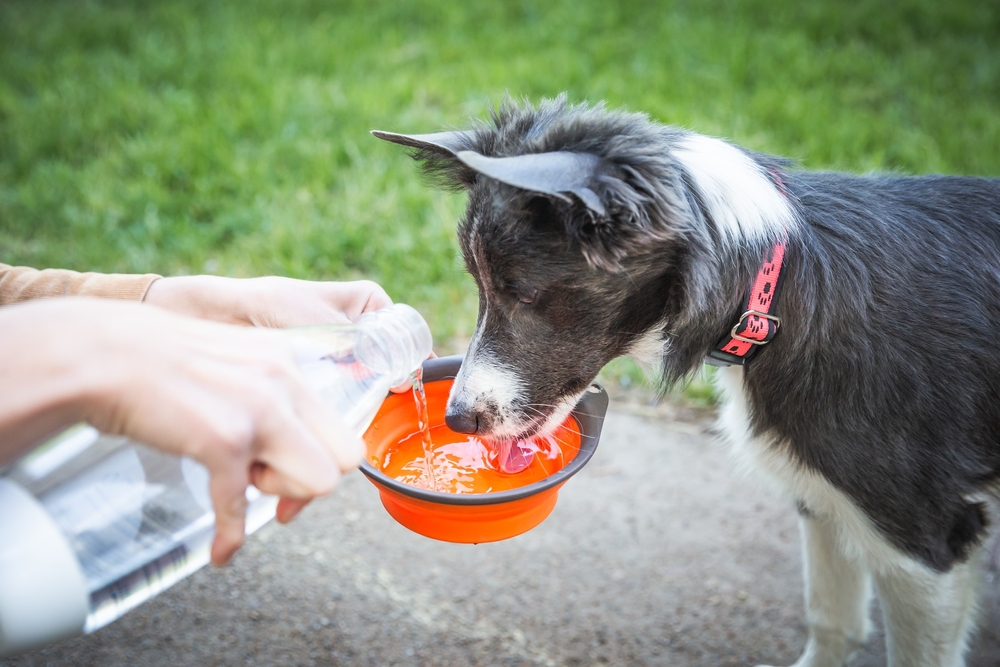Exercise is vital for dogs’ health, vitality, and happiness, but not all dogs benefit from the same activities. When determining a suitable exercise for your furry pal, factors such as their breed, size, age, and health status significantly influence their abilities. By tailoring your dog’s activities to their needs, you can help prevent obesity, promote mental stimulation, and improve overall health. Our Williamsburg Animal Clinic team offers suggestions to help you determine which exercises can inspire your four-legged friend to keep moving.
Exercises based on your dog’s breed
Your dog’s breed or breed mix has much to do with their appearance, stature, personality, and ability to perform various activities. Consider the following exercises based on dog breeds:
- High-energy or working breeds — Breeds, such as border collies, Australian shepherds, and cattle dogs, are known for their energy level and need extensive physical and mental stimulation. Working and sporting breeds must be extremely active to burn off excess energy. Good exercise options for these breeds include:
- Running
- Jogging
- Agility training
- Trick training
- Competitive sports such as disc dog
- Fetch
- Hiking
- Moderate-energy breeds — Breeds, such as cocker spaniels, boxers, beagles, Yorkshire terriers, and schnauzers, typically have moderate energy levels. Suitable exercises include:
- Daily or twice-daily 30- to 60-minute walks
- Tug-of-war
- Fetch
- Puzzle games
- Short hikes
- Swimming
- Interactive toys
- Low-energy breeds — Great Danes, bloodhounds, and basset hounds are breeds that usually have low energy. Brachycephalic breeds, such as bulldogs and pugs, often have respiratory issues, so their activities should be limited. Appropriate activities include:
- Short strolls
- Indoor fetch with soft toys
- Treat dispensing puzzles
- Interactive games
Exercises based on your dog’s age
Your dog’s age should play a key role in the exercises you choose for them. Puppies need short, frequent activity bursts. Puppies’ exercise options include:
- Several 5- to 10-minute play sessions per day
- Basic obedience training sessions of short durations
- Playdates with other puppies or well-behaved adult dogs
- Short visits to the park
Adult dogs are typically in their prime physical health. Adult dogs can handle myriad exercises, including:
- Regular 30-minute or longer walks
- Fetch
- Disc dog
- Agility courses
- Trick training
- Outdoor activities such as hiking or swimming
Senior pups need low-impact exercises. To maintain your senior dog’s mobility and health status, offer them activities such as:
- Daily 15- to 30-minute strolls
- Swimming
- Indoor play such as hide-and-seek
- Puzzle toys
Exercises based on your dog’s health status
You should factor in your furry friend’s general health and well-being when determining which exercises to offer them. For example, dogs with joint or mobility issues should avoid high-impact sports. They should perform activities that minimize their musculoskeletal injury risk. If your dog is overweight, gradually increase their exercise duration over time. While the goal is for an overweight pup to shed some pounds, you want to stay within their abilities to avoid injury. Additionally, dogs with respiratory issues, such as brachycephalic breeds, should never engage in high-impact exercises or be active when the temperature is too high. Our Williamsburg Animal Clinic team should assess your pet’s health and physical abilities before you embark with your furry pal on a new exercise regimen.
When enough is enough: Fatigue signs in dogs
Sometimes, pet owners overlook their dogs’ signs that indicate they are tired or have become overexerted. If your four-legged friend exhibits fatigue signs, give them water and head back home so they can relax and recuperate. Watch for these fatigue signs:
- Drooling
- Excessive panting
- Restlessness
- Attempting to turn back home during a walk
- Sitting down in the middle of walking or exercising
Keep your dog hydrated

Always make plenty of clean, fresh water available to your dog, especially during exercise, whether on a walk, in the yard, or inside your home. Your pet will need additional hydration when exercising, especially on warm days. In addition, if exercising outdoors with your dog, ensure they are up-to-date on all vaccines and parasite prevention.
By tailoring your dog’s exercise regimen to their breed, age, and health status, you can ensure their safety and enjoyment while staying active. Call our Williamsburg Animal Clinic team so we can assess your four-legged friend’s physical health and recommend suitable exercises.

